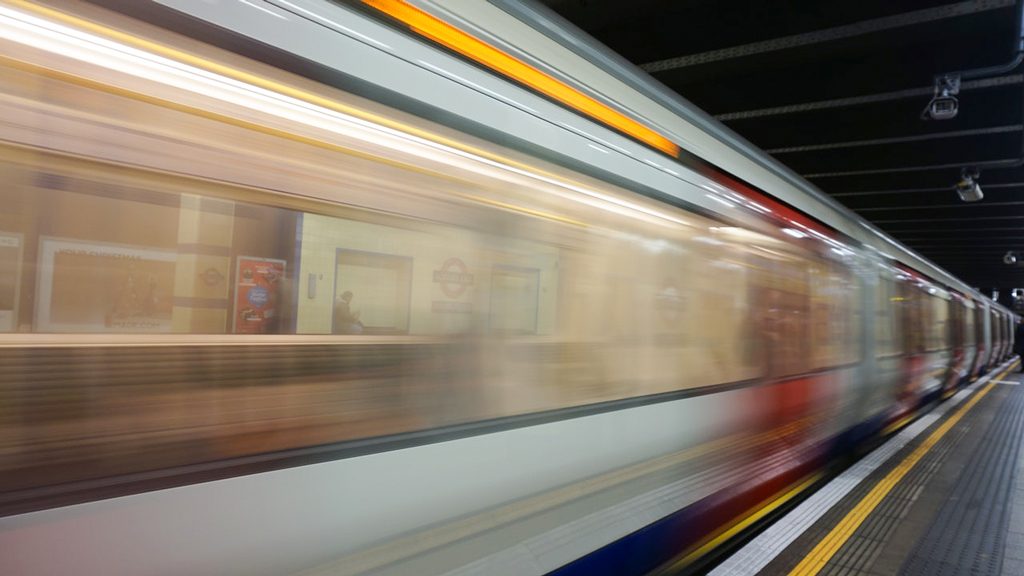Some buildings go up, others, well, go down — in this case deep down into a west Montreal neighbourhood at one end of the city’s longest subway lines.
The Societe de transport de Montreal (STM), the authority that runs Montreal’s underground metro and surface buses, is constructing an underground garage and maintenance building that will put the subway system in good stead for future years, allowing more trains to run, especially with the delivery of the system’s new Azur cars and general subway expansion.
The project, now more than one year into its four-year schedule, combines the submerged main building along with two others and an extensive buildout of the underground train storage yard. Increasing storage to 20 trains will almost balance the west side’s storage capacity with the so-called Orange line’s east side’s two garages, which can store 25 trains.
“This in turn will allow the STM to balance its operational planning,” STM spokesman Philippe Dery said.
Deep in the ground, trackage will expand by 1.5 kilometres, housing 12 trains and an additional track for maintenance.
The 10-storey building itself will house electrical and mechanical equipment and operational and maintenance facilities, accessed from the surface by stairs and an elevator. There will be no vehicle access.
The 30 metre dig is almost finished with “small sections” remaining, said Dery.
The site is in the borough of Saint-Laurent and alongside busy Marcel-Laurin Boulevard, next to the Bombardier Aerospace plant. The site has a history of industrial uses and most recently was a parking lot for pharmaceutical company Pfizer.
Dery said “multi-million dollars” worth of environmental cleanup was completed before excavation, with contaminated soils brought to certified sites.
Main structural work is being carried out by consortium l’entrepreneur EDT GCV CIVIL S.E.P, architectural by Group TEQ, mechanical by Groupe SCV and electrical by DAWCO.
Excavators were first used to dig to bedrock at a sub-surface depth of 10 metres. Then explosives were used. Controlled explosions differed one from the other.
“The volume of the excavated area and quality of the bedrock are taken into account, but the most important one is acceleration caused by the explosion,” Dery said. “Most importantly, the displacement effects of the blasts are lower than the required limits.”
For both the excavation and tunnelling, one of the biggest challenges was geological faults, which necessitated moving the excavations around them.
“Surveys showed other geological faults,” the official said. “However, in some cases, these were unavoidable. They were dealt with by putting in place multiple retaining measures.”
Meanwhile, tunnelling is being carried-out by two 130-tonne Austrian built Roadheaders, which were dismantled in Germany and then reassembled onsite. They consist of two cutting heads, operator booths and a conveyor connected to loading equipment.
Debris fills 10 trucks an hour and is used for back fill or transported to another mammoth city construction site, the replacement Champlain Bridge, built by Signature on the Saint Lawrence Group consisting of SNC-Lavalin, ACS and Hochtief.
Tunnel walls are shored up by “jumbo drill” hammers knocking steel rods up to four metres to anchor rock. Further reinforcement is sprayed concrete six inches deep.
Air is pumped via massive ventilation tubes. If a malfunction occurs, workers are equipped with mini scuba-tank-like devices that can provide oxygen for 60 minutes
The 320 onsite workers on the 24-hour, seven days a week site have received Commission de la construction du Quebec (CCQ) qualification. They’ve also received ASP construction training and other specified training as required.
There’s also rescue training and training on respiratory equipment for emergency personnel.
The expanded tunnel and buildings will be completed by spring 2021.
“This is a normal, if not condensed, timeline for a project of this magnitude,” Dery said.











Recent Comments